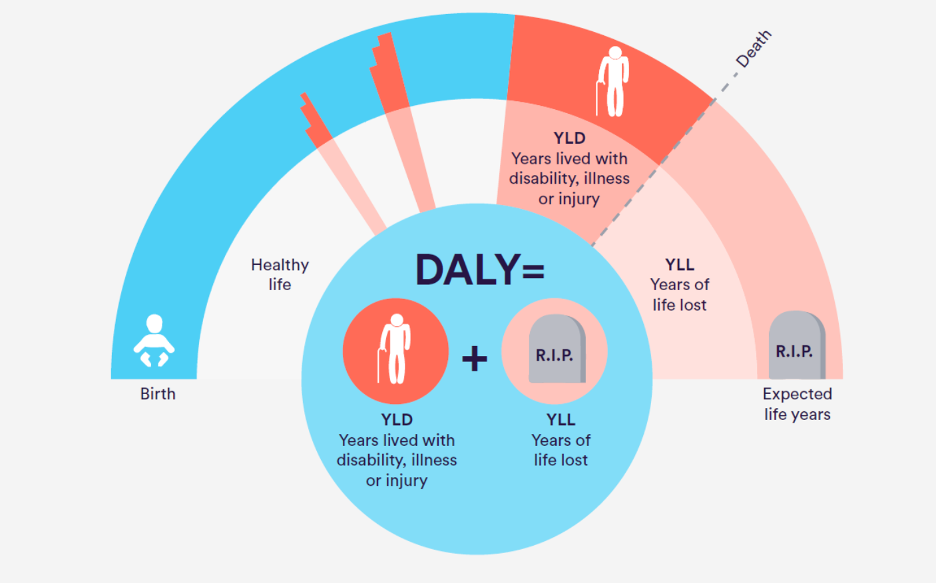This piece was first posted on Substack. To comment, please go there.
Public health is fundamentally about trying to create a world that is healthier, better. In doing this work, we must, at times, assume the role of commenting, a priori, on how we are falling short on generating health. This can have the effect of making a discipline that is all about health seem chiefly concerned with sickness, so often do we find ourselves discussing it—its causes and its consequences. This conversation is necessary for the work of public health. But it is worth asking: can this have the effect of keeping our attention fixed on challenges at the expense of a focus on the more positive aspects of health—of all the ways health can enable a happy life? It strikes me that it might be worth taking a moment—perhaps informed by the promise of soon summer—to discuss how public health can refine its emphasis, to better communicate the inherent positivity of the work of public health.
This positivity can, at times, get lost in translation. Our messaging seeks to curb behaviors which can lead to sickness and preventable harm. This messaging tends to involve statements that begin (implicitly), with the words “Thou shalt not.” “Thou shalt not drink.” “Thou shalt not smoke.” “Thou shalt not eat to excess.” What we mean by these statements is to offer a blueprint for behavior which supports a long, healthy life. Yet it is possible to read them as prohibitions against fun, against the pleasure and joy which are core to living that very life to begin with.
Some might dismiss this as a matter of mere tone, secondary to more urgent priorities. Yet the wrong tone can risk alienating the very public we are meant to serve, and, in doing so, weaken the effectiveness of public health. Consider what we have seen during COVID-19. The threat posed by the pandemic has meant that, during the past year, the population has been receptive to the message of public health arguably like never before. Yet, even under these circumstances, there has still been resistance to public health. Such resistance—even in the midst of a pandemic—suggests that, for some, public health is seen primarily as an attempt to curtail freedom and enjoyment and is, as such, to be resisted. The great irony of this is that curtailing freedom and enjoyment is the precise opposite of what public health should aspire to do. Our actual intent is to ensure as many people as possible are free to live long lives full of the activities and interactions that bring happiness and meaning. Such lives are only possible in a context of health, of being free from the disease and preventable harm that can stand between us the pursuit of a happy life.
So, is there a better approach we can take? Can we invert our image so that it better aligns with our mission to maximize happiness and help us fulfill our human potential? I suggest that we can, through the embrace of three ideas.
First, we can advance a definition of health which is fundamentally positive. This means communicating how public health advice is, at core, meant to enable enjoyment, not curtail it. By way of illustration, let us compare public health advice to the advice given by pool safety signs. I am always struck by how such signs tend to be lists of prohibitions: “Do not drink the pool water,” “Do not swim alone,” “No diving in the shallow end.” Such prohibitions are all necessary and reasonable, yet how they are presented—as a series of stern pronouncements—can make it easy to ignore them, as many people do. How much of a difference might it make to include on the list of prohibitions a friendly request, one which captures the essence of why pool and people are there in the first place? “Have fun in the water.” To put that on a sign, without removing any of its other important warnings, could do much to ensure the sign is noticed, the warnings heeded, to the ultimate good of all the swimmers. It would also be something nice for them to see, a note of positivity which has the effect of keeping them safer. We could advance a public health which is much like that sign, keeping core messaging intact while including elements of positivity which speak to the central reason we wish to be healthy: so we can have fun in the “water” (to return, once more, to this newsletter’s founding metaphor).
This leads to a second idea: we should promote health not as an end in itself, but as a means to living a happy life. When we talk about health solely as the prevention of disease, this means that it is indeed disease which characterizes much of our conversation about health. However, when we regard health not as an end, but as a necessary step on the journey towards the destination of a full life, the conversation about health becomes one about all the positive factors which inform such a life. Talking about health in this way would represent a significant departure from how most people discuss health. Our overwhelming investment in doctors and medicines in the US reflects the high premium we put on health as an end in itself, for which no price is too high. Changing course will mean a fundamental shift in what we talk about when we talk about health. Key to creating this change will be the use of narrative and storytelling as a means of broadening our imagination about what health is for. I have often favored the metaphor of investing in a car. Imagine buying a nice car and pouring money into its upkeep, ensuring that it can run smoothly, and then keeping it forever shut in the garage. This car is like our health, as we currently understand it. We take pains to keep the car in good shape, but forget that the whole purpose of having a car is to travel. Public health, then, aims to keep the car in good shape, while also building good roads, creating nice scenery, and doing everything possible not just to have a nice car, but to have a pleasant journey. This is the kind of positive, aspirational story we should be telling, to better engage with the public.
Finally, we can revisit the language which informs public health measures, to shape greater emphasis on the positive importance of health as a means of living a long, happy life. Below is a visualization of the meaning of disability-adjusted life years (DALYs), a common term in public health defined as the combination of years of life lost due to the presence of some form of disease or injury and years spent prior to that point living with disability or suboptimal health as a consequence of such conditions.

DALYs are a powerful tool for calculating the effects of various health challenges. Yet they also further embed within the way we talk about health a focus on the disease we aim to prevent at the expense of the joy and pleasure we hope to enable. A helpful counterpoint would be measuring a combination of years of potential life gained and years spent in full health as a result of public health interventions. This could shift our focus from one exclusively concerned with death and disease to one which also engages with the positive aspects of life we hope to support through our work.
I will conclude on a literary note, which, I think, well reflects what we have been discussing. In a letter, the poet Hart Crane once wrote:
“The poetry of negation is beautiful—alas, too dangerously so for one of my mind. But I am trying to break away from it. Perhaps this is useless, perhaps it is silly—but one does have joys. The vocabulary of damnations and prostrations has been developed at the expense of these other moods, however, so that it is hard to dance in proper measure.”
I would argue that the work of public health, in its emphasis on preventing disease rather than on enabling pleasure and joy, risks being seen as something like “the poetry of negation”—negation of the activities that bring pleasure and fun. In preventing disease, we should not lose sight of the fact that “one does have joys,” and celebrating joy should be at the heart of the work of public health. Such a positive focus is essential to more effectively engaging with the populations we serve. I would point the reader to some excellent emerging efforts by colleagues who are pushing forward a scholarly agenda on health and happiness and on related concepts such as human flourishing. By balancing our emphasis on preventing sickness with an emphasis on enabling joy, we can become better at doing both, so that we may “dance in proper measure” towards the aim of supporting health.


